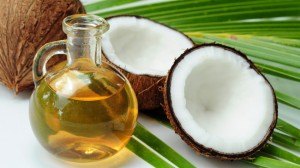 By: Alec Deacon / Source: Before It’s News
By: Alec Deacon / Source: Before It’s News
We’ve talked about a lot of multi-purpose and indispensable items for us, survivalists, from baking soda to lemons and olive oil. Here’s another one you might not have known to have some surprising benefits: coconut oil. In my opinion, it should be stored by every prepper out there. It has dozens of health and survival uses,and you wouldn’t want to be caught up without your coconut oil.
I’ve chosen to outline 7 of the many situations where you can use coconut oil for survival purposes. You should also read this book,The Coconut Oil Miracle, by Dr. Bruce Fife, to find everything about this product and why you should add it to your preparedness cache.
#1: Preventative treatment
Coconut oil has anti-fugal, anti-bacterial, anti-inflammatory, anti-microbial, anti-viral and lots of other medical properties and is great as an everyday treatment and preventive measure for bacterial infections, influenza, herpes, measles, skin problems and sunburns, parasites, and I could go on and on and on. I’ve used it at home as a moisturizer for my cracked skin or as an antibiotic emollient.
#2: Energy boost
For those moments when you need to walk for miles, be awake for hours, deal with fatigue, you can keep your energy levels up with coconut oil. 1 tsp in the morning will naturally boost your energy and will last all day. Coconut oil is mostly made of MCFA’s (medium chain fatty acids) used by our bodies as fuel to produce energy. It works great for fat burning too and is easily digested.
#3: Insect bite treatment
This is a really great use especially for when you need to bug out somewhere in the wild and you’ll need a treatment for bug bites and also to keep insects off. A mix of coconut oil and peppermint oil reduces the itch and has a soothing effect.
#4: Natural homemade soap
For your bath, face wash and even for your laundry (as a stain pre-treater) you can make your own coconut soap from ingredients such as almond, avocado, castor, lye, olive oils and coconut oil (to fatten the soap and give it shelf stability). Great cleansing and lathering properties and no irritations.
(Related: Tips On How To Survive A Disaster With Family Survival System)
Here are some simple recipes I picked up from Mommypotamus:
Lathering Skin Bar (20% superfat)
Note: Because this soap is highly superfatted it can create a very dense lather when rubbed directly on skin. For a light, bubbly effect I recommend lathering with a natural sponge.
33 oz coconut oil, 76 degree
4.83 ounces lye (NaOH)
12.54 oz water
5 – 1 ounce essential oils (optional)
Laundry Soap (1% superfat)
All amounts are by weight
33 oz coconut oil, 76 degree*
5.9 ounces lye (NaOH)**
12 oz water
5 – 1 ounce essential oils (optional)
#5: Personal hygiene
I am just amazed of the many uses coconut oil has for our personal care. You can use it as an aftershave or as a razor burn treatment, as deodorant (great even used alone but even more efficient in combination with baking soda), hair conditioner, hand cleaner (you can easily remove dirt, paint or wax with coconut oil), mouthwash, ear cleaner, massage oil, you name it…
It’s also way safer than everything you buy from the store, natural and nontoxic, to both humans and animals. And the best part is that a little goes a long way and you don’t need to use large quantities of coconut oil. Keep a small container in the bathroom for topical use, such as 16-ounce, and you’ll see just how long it will last.
#6: Stress relief
This amazing superfood can also help you lower your stress level. Apply it on your head and massage it softly, in a circular motion and you’ll simply feel its soothing effect and how it instantly helps relieving mental fatigue.
#7: Lamps and torches
Coconut oil is great to improvise torches and oil lamp fuel. It’s a cheaper and cleaner alternative to isopropyl alcohol mix (generally used for standard oil lamp fuel), burns without a smell or smoke and is safe to use. This can really come in handy in a survival situation.
Also, check out this chart outlining the recommended daily dosage of coconut oil, to know how it should be consumed. It’s important you know how it can affect you first so don’t go on eating and using lots of coconut oil before doing a little research first.
Keep as well in mind that there are different types of coconut oil and the one to choose is unrefined (meaning virgin coconut oil that comes from fresh coconuts) because it retains the most health-protecting nutritional values.











